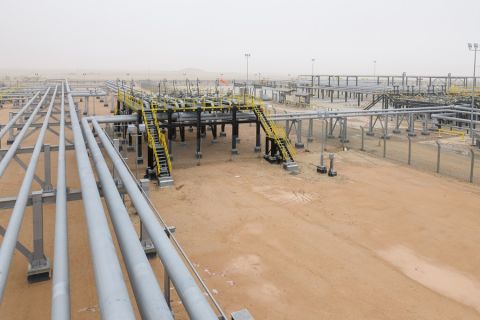To perform their jobs, geoscientists need to access and analyze vast amounts of information. This means that beyond core geoscience techniques such as seismic interpretation, analyzing well log sequence stratigraphy, or basin modeling, they must also know the best ways to access and decipher data sources using modern information technology.
Increased competition in the industry, whether involving established or new companies or national companies looking to expand beyond their borders, means many more players are seeking to exploit the same resources. The risk of losing out to a competitor means each play is high stakes – making accurate value assessments and planning expensive fieldwork calls for using the best information available.
This is on top of industry developments that open up more potential areas for discovery, not only in unexplored areas but, for example, reviewing a location’s suitability for unconventional exploration or deciding whether an existing site can be revisited using new extraction techniques and technologies. Since the first company to enter a region also can build and control the necessary infrastructure for those that follow, there is enormous financial reward for being the first to uncover an untapped hydrocarbon resource.
The result of these events is that geoscientists are always under pressure to produce accurate predictions as quickly as possible.
Generation gaps
There is an extra challenge: a pronounced skills gap in the explorationist workforce. The cause of this is generally attributed to the period of low oil prices from the mid-1980s through the 1990s. Exploration investment dropped along with the hiring of junior geoscience staff.
As a result of this drop in job opportunities, from 1985 onward the number of students taking undergraduate and graduate degrees in geoscience fell. This has resulted in a generation of geoscientists that are within a decade of retirement without a comparable number of new arrivals waiting to take their senior positions. It means existing geoscientists have to work harder than ever both to ensure that knowledge is not lost when their co-workers retire or move on and to make sure their employer can still get the same value from a shrinking number of employees.
Those new recruits brought in to fill the expanded demand for geoscience professionals are younger, “millennial” workers who, while lacking the extensive hands-on experience in research and data management skills of the older generation, have grown up with computers and are very tech-savvy. Training methods for these new workers must reflect the digitized workplace and technology-centric tools used in modern oil and gas exploration. As a result, companies need a way to bridge the gap between these two generations.
Everything under one roof
The first thing a company should do is ensure that as much of the information as possible is consolidated in a single, accessible repository. Simple time constraints mean that time spent sharing knowledge such as regional studies or raw field data directly among employees is impossible; geoscientists still need to perform their core task of analyzing data, not be expected to keep tabs on every single piece of information generated by the company and other activities. In addition, workers often will be dispersed around a continent or even the globe, making it even more challenging to share information as and when needed. If information is consolidated, geoscientists can concentrate on the more valuable task of sharing best information management practices and other processes with co-workers.
That said, simply consolidating all of an organization’s information and then leaving it to geoscientists to sift through is not enough. This would be inefficient and result in workers reviewing a huge amount of unrelated information. The aim of consolidating information should be to make investigation as simple as possible, meaning that geoscientists only need to concentrate on developing skills that will help them analyze that information and produce conclusions that can be shared with others involved in exploration. As such, organizations wishing to make use of consolidated information to bridge the generation gap must make sure they are using the right tools.
Introducing the information age
Technology has been a huge boon in allowing this information to be consolidated in the first place. However, organizations must ensure they are using all tools to their full potential. Memory and processing power have become so inexpensive that it is possible to save near-limitless amounts of digitized information. With Internet access this information becomes global, allowing a dispersed multinational corporation to share information from headquarters to field offices.
However, storage and access is only half the battle. A comprehensive database is worthless if users cannot pull out and examine the information that is most useful to them. Data must be organized and searchable in ways that will ensure relevant information appears together, for example, geospatial data grouped by basin or geological information that can be returned based on search terms. The solution to this task is metadata – data about data. Metadata allow information in a repository to be sorted and refined based on predefined criteria, meaning that the results of a user’s search can be “filtered” accordingly to produce only those items that are most relevant.
Finally, the information must be in a usable format. If it can’t be easily accessed and understood by geoscientists on their machines, its value drops sharply. This means using standard file types based on the underlying data (e.g. documents and reports in the form of PDFs or numeric data in comma-separated value format). For geospatial information, the relevant geographic information system map file formats, such as shapefiles and GeoTIFFS, will be invaluable.
Beyond generations
Making a corporation’s substantial knowledge base available to explorationists would make sound sense even if the skills gap did not exist. Any steps taken to enhance the sharing of quality knowledge and insight are essential to out-compete rivals. However, with the skills gap it becomes a vital task. The growing number of highly educated, digitally skilled, but inexperienced geoscience staff needing information accessibility will only grow in importance to ensure proprietary insights are passed down to the next generation.
As with any industry, change for oil and gas companies is inevitable. The changing generations of geoscientists are just one of the many considerations companies will need to bear in mind throughout the 21st century. By consolidating information and knowledge, making that knowledge as easy to access as possible, and doing their best to ensure that geoscientists can interpret the results that are relevant to them quickly and comprehensively, companies will place themselves in a very good position for the future.
For more information, visit http://www.elsevier.com/online-tools/geofacets.
Recommended Reading
What's Affecting Oil Prices This Week? (April 15, 2024)
2024-04-15 - While concerns about the stability of oil supply are increasing, Stratas Advisors does not expect oil supply to be disrupted – unless there is further escalation in the Middle East.
Paisie: Crude Prices Rising Faster Than Expected
2024-04-19 - Supply cuts by OPEC+, tensions in Ukraine and Gaza drive the increases.
What's Affecting Oil Prices This Week? (April 22, 2024)
2024-04-22 - Stratas Advisors predict that despite geopolitical tensions, the oil supply will not be disrupted, even with the U.S. House of Representatives inserting sanctions on Iran’s oil exports.
What's Affecting Oil Prices This Week? (April 8, 2024)
2024-04-08 - Stratas Advisors says geopolitics are providing a boost for oil prices as conflicts escalate–and while crude oil and oil products continue to flow, the possibility of disruption is increasing.
What's Affecting Oil Prices This Week? (April 29, 2024)
2024-04-29 - Stratas Advisors says even with the reported drawdown in U.S. crude inventories, the price of Brent crude oil remains below the upward channel that had been in place since January of this year.





